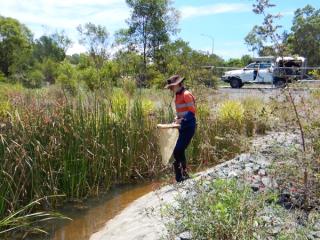
Unearthing ESG Value: Scalable solutions for mining projects from exploration to closure
by Michelle Gluck, Jim McKinley
View post

During the warmer months, summer rains and king tides provide ideal breeding conditions for mosquitoes and biting midge.
An increasing number of species of mosquitoes are known to be vectors for serious disease, including Ross River Fever, Dengue Fever and Barmah Forest Virus. In the 20 years leading to 2020, over 43,000 cases of Ross River Fever were reported in Queensland. More-over, both mosquitoes and biting midges may significantly affect amenity, and thus the value of a property.
Unsurprisingly, the development of a Biting Insect Management Plan has become an increasingly important element of both the design and approvals processes.
The development of a Biting Insect Management Plan must respond to the requirements of various Acts, Codes of Practice and Guidelines. In Queensland, this may include the:
It's best practice for any Biting Insect Management Plan to be under-pinned by a sound understanding of the ecology of mosquitoes and biting midge in the context of the specific development site. Consequently, a pre-development survey of breeding and roosting habitat and a trapping program to determine species prevalence is recommended.
Water is critical to the life-cycle of both mosquitoes and biting midges. The most common mosquito species in south-east Queensland, the saltmarsh mosquito (Aedes vigilax) typically lays its eggs in the pools of brackish water left within saltmarsh by spring tides, whilst the common banded mosquito (Culex annulirostris), a carrier of both Ross River Fever and Barmah Forest Virus lays its eggs in standing freshwaters following rainfall. The common back-yard mosquito typically lays its eggs in foliage that holds water, but also in containers, old tyres, etc. that hold water. Adult mosquitoes emerge within approx. 7 – 10 days with some species of mosquito known to have a pest-range exceeding 20 km.
Whilst most species of biting midge breed within the inter-tidal zone, Culicoides townsvillensis breeds within damp leaf-litter and well-watered garden mulch.
An effective Biting Insect Management Plan will address both construction and post-development phases and comprise a consideration of risk to human health and amenity and measures to minimise on-site breeding and roosting. These measures might comprise a combination of the management of standing water on-site (including the stocking of stormwater retention basins with larvae-eating native fishes), the tailoring of landscaping and the creation of ‘breezeways’ within the development, the setting-back of development from identified breeding and / or roosting habitat and the incorporation of specific architectural design elements.
The most successful Biting Insect Management Plans seek to integrate developer-initiated site-based measures with Council’s wider biting insect management strategies.
Our experts have been supporting local authorities and developers throughout Queensland and New South Wales to develop practical and cost-effective Biting Insect Management Plans since the early 1990’s.
To speak to one of our experts, please get in touch

by Michelle Gluck, Jim McKinley

